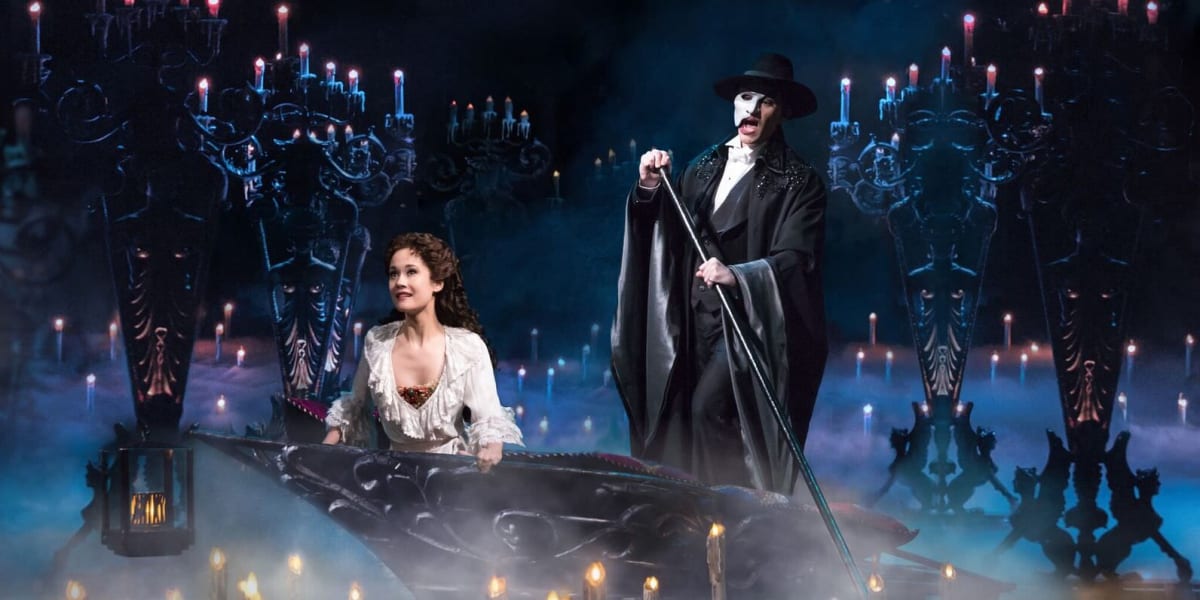It is a privilege to attend a performance of The Phantom on Broadway in 2018, when it is celebrating 30 years since its premiere – the only Broadway show to have reached this venerable age and the second longest running show in the whole world! This explains why its audiences keep returning, mesmerized, and also why certain staging details seem old-fashioned now. However, one feels the awe inspired by a classic.
Already famous by now, Lloyd Webber’s musical is based on Gaston Leroux’s 1909 novel. Its Gothic atmosphere was inspired by his idols – Poe and Conan Doyle, but doubtlessly by Hugo’s The Hunchback of Notre Dame too. The spice of the plot, however, is lent by the entwinement between legend and real facts connected to the history of the Paris Opera House, Palais Garnier, such as the shattered chandelier, which might well be the most striking effect of Maria Björnson’s beautiful design. The whole transition from the 1911 auction in the Prologue to the 1881 action of the musical is impressive, as the chandelier “flies” up not on stage, but at the front of the auditorium, and the curtains of the Opéra are raised much like the sails of a ship in a breath-taking metamorphosis.
What stuns opera lovers at their first encounter with this musical is Lloyd Webber’s extraordinary invention of fictional operas. “Here, Lloyd Webber pastiched various styles from the grand operas of Meyerbeer through to Mozart and even Gilbert and Sullivan”, Michael Coveney writes in his book on the composer. Hannibal allows for the obsolete use of a cardboard elephant on stage and exposes the singers’ artificial acting in the nineteenth century. Il Muto rewrites Act II of Mozart’s Le Nozze di Figaro, with Serafimo (seraphim) replacing Cherubino (cherub). Finally, Don Juan Triumphant, whose title is an allusion to Vivaldi’s oratorio Juditha Triumphans, rewrites the scene in Mozart’s Don Giovanni in which the title character dresses up as his servant Leporello (“little rabbit”, here replaced by Passarino – “little bird”) to seduce Donna Elvira’s chambermaid. The music is so modern, so harmonically complex and so difficult intonation-wise as to demonstrate the Phantom’s ground-breaking compositional genius. Like Juditha, Christine betrays the man who is in love with her, and unmasks him just as Don Giovanni is finally unmasked.
The Broadway show is musically enriching, as most singers are consummate vocalists. Crawford makes beautiful transitions between his chest voice and falsetto; Ewoldt creates a moving character, nuancing her timbre according to her emotions; Suarez Groen delights with her roulades and high notes. For all her evil grimaces, she is beautiful, like all the other female principals. Moe impresses through his vocal quality and technical accuracy, and Maree Johnson creates a strong Mme Giry, a character created by Björnson to be a visual replica of Mrs. Danvers in the 1940 film after Du Maurier’s Rebecca. Less vocally satisfying are Armstrong Johnson (Raoul) and Craig Bennett (Firmin). The orchestra provides a very welcome foil to the dramatism of the voices.
The scene in which the gondola slides on the subterranean vapour-made waters among candlesticks that spring out of traps in the floor, and then turns into a bed, is entrancing. However, the “ghost” ’s zombie-like deformity and the Hollywood-like kisses between the lovers are old-fashioned and no longer appealing to a knowledgeable and sophisticated modern audience.
But the evening did end symmetrically, as the principals presented a number of show-related products and subsequently sold them on behalf of Broadway Cares to support AIDS patients, thus giving an example of compassion, love, and generosity, just as this musical does.

